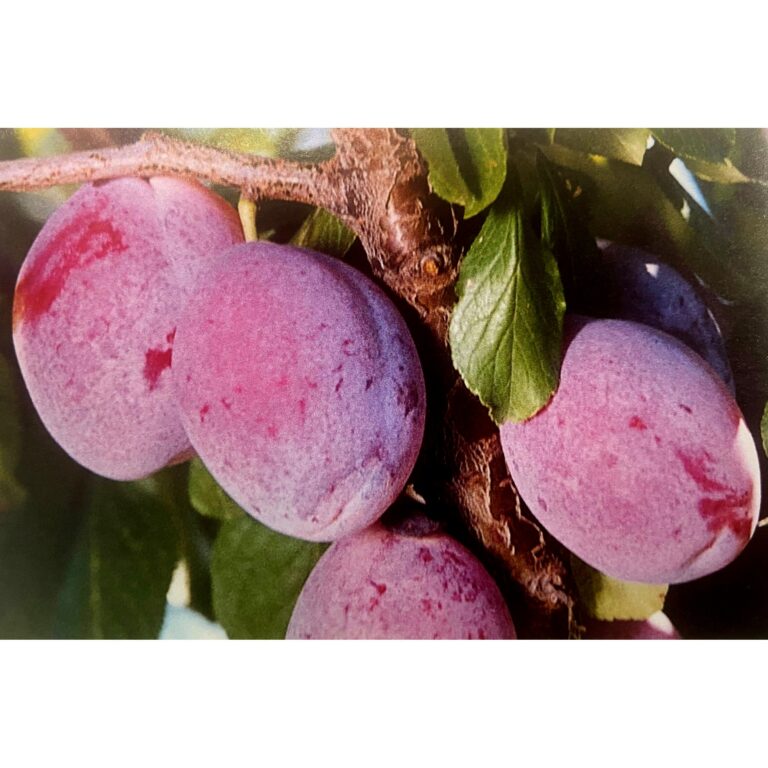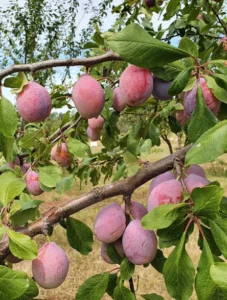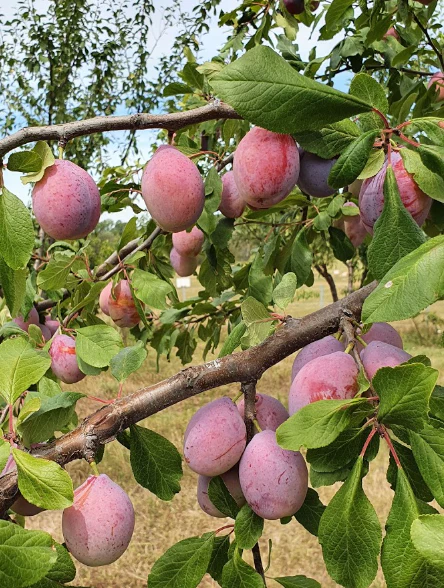THE “COSCIA DI MONACA” PLUM TREE
In local dialect: ” coscia delle monneche”
Prunus domestica L.
Rosaceae
The Coscia di Monaca (literally, “nun’s thigh”) plum is an ancient and particular variety; it is known for its elongated shape and sweet taste.
Keep on reading to learn more about this distinctive plum!
🌱 CULTIVATION AND ORIGIN
- This traditional Italian variety is cultivated primarily in southern and central Italy, especially in Abruzzo, the Marche, Lazio, Campania and Sicily.
- It ripens between the end of July and August, making it one of the most awaited plums of summer.
- This hardy plant adapts well to warm climates, though fruiting can be alternating (some years more abundant, others less).
🍑 FRUIT FEATURES
- The name “Coscia di Monaca” (literally, “nun’s thigh”) derives from the elongated, tapered shape of the plum, which resembles a nun’s leg covered by her habit. . 😆
- It has a thin, golden-yellow peel with reddish nuances when ripe.
- Its pulp is very sweet, juicy and fragrant, and it has a honey-like aftertaste.
- It has a small kernel that is easy to separate from the pulp.

🏛️ STORY AND TRADITION
- It was very popular in the rural Italian markets during the 19th and 20th century.
- In the past, it was believed to be the ideal fruit for elderly people and children because of its softness and digestibility.
- According to popular tales, this plum was given to wayfarers at convents, so its name may have been influenced by this tradition.

🍯 CULINARY USES
Thanks to its natural sweetness, it is ideal for fresh consumption.
- It is perfect for jams and preserves because, once cooked, its pulp becomes even creamier. It is exceptional in our plum jam.
-
It is an excellent ingredient for homemade desserts, such as tarts and moist cakes
-
It is also used in traditional liqueur preparations, such as prunella or homemade infusions.
-
When dried, it becomes exceptional, with a more fragrant taste compared to common industrial plums.
These contents were written and researched by the owners of the SiGi Agricultural Company in collaboration with the students of the Agricultural Technical Institute of Macerata.
If you would like to contribute to expanding the descriptions of these varieties, you can send an e-mail to info@agricolasigi.it
We launched the e-museum of ancient fruits thanks to a social farming project of the Marche region. The translation is by komalingua
This project enabled five young people with cognitive impairments, aged 20 to 25, to work on the farm. They were selected by psychologists and Anffas social workers, supported by the professional educator Il Faro and supervised by UniMc researchers. Coldiretti Marche handled communication and distribution.
This unique and challenging project led to the creation of both a physical and virtual museum of ancient fruits in SiGi’s garden. This is not only a great honor but also a significant commitment that we are willing to continue with everyone’s support. You can contribute to our projects by choosing our products, or you can do so directly here:

